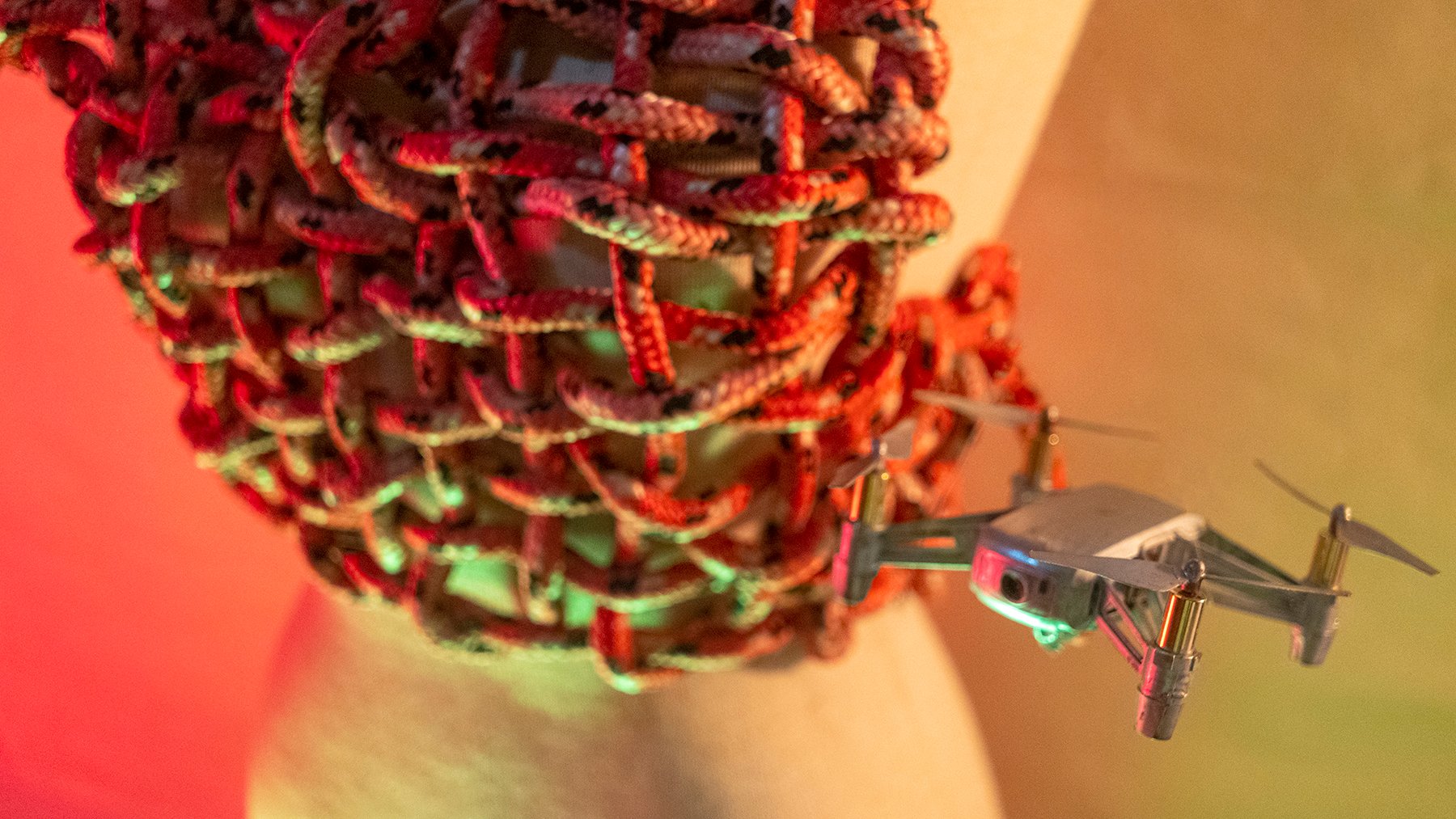
The first weekend of the Dutch Design Week (DDW) is behind us. Until October 25, more than five hundred projects can still be viewed online. It is easy to get lost amongst all these exhibitions. Here are some of the highlights of DDW 2020.
Living Coffin
Studio Hendrikx uses mycelium for the Living Coffin. Fungi emit long threads that branch out further and further, this root network is called mycelium. This network is essential for soil as mycelia break down organic material.
The Living Coffin uses this process to decompose the human body and process the nutrients in the soil. According to Studio Hendrikx, the coffin is the first ‘living’ coffin that will not pollute the soil but enriches it instead. Innovation Origins had reported on this coffin in an earlier article.

Drones @ Home
Lizzie Harper from United Matters presents her project: Drones @ Home. Sections of the textile industry are being revamped with the help of digital tools. While other production stages continue to use outdated, traditional machines, and methods.
Harper is introducing drones into the textile manufacturing process. The drones can be programmed to fly in such a way that they create textures in textiles. The drones can be programmed in countless ways so that a multitude of different patterns can be woven.

Papercut
Papercut from Surplus Collective is exploring how the material world can be experienced within a digital world. The collective wants to convert physical concepts into digital presentations. The work made by various designers is presented as paper cuttings. A tiny train runs between the clippings so that you are guided through all the work.

Pi Lab
Pi Lab presents its Fields of Pi in the DOMUSDELA chapel. The project features 3D printed shapes that are inflated using heat and air. Although it started out as an art project, the creators expect that this research will eventually have a greater impact.
Sioux Lime and the Eindhoven University of Technology are looking at how the technique can subsequently be used in the packaging industry, architecture, and medical applications such as prosthetics. The makers will look at potential applications of the technique during the DDW.

The Space in Between
Suzanne Oude Hengel and Milou Voorwinden delve into new ways of developing knitted and woven spacers in The Space in Between project. The spacers, a kind of insole, provide support and protection for feet. Oude Hengel en Voorwinden experiment with yarn and machines that allow them to weave the required properties into the fabric. This makes the spacers easy to adapt to the needs of each individual.

Take a look at these and other projects on the Dutch Design Week website.

